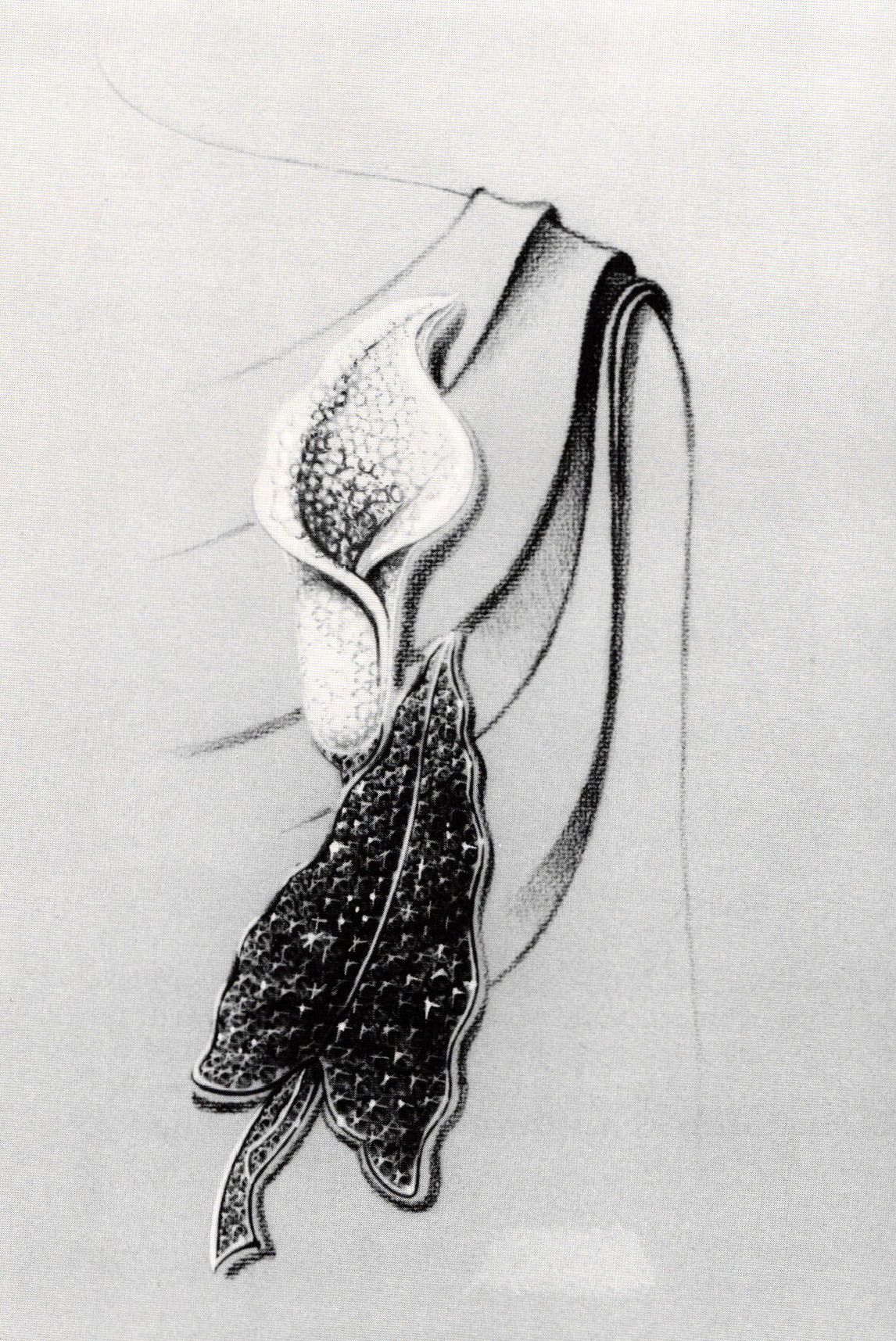Rendering Design and Process
4 Minute Read
This is the second in a series of articles on the art and skill of rendering jewelry and small metal objects. Here we show the stages of rendering from pencil roughs to finished pencil renderings with color to full-color renderings, and discuss the importance of rendering for the jewelry designer.
In the first article of this series (see Metalsmith volume two, number four), Alfred Durante, design director at Cartier, discussed the role of the designer in the jewelry industry. Here both Mr. Durante and Richard Palermo, professional jewelry renderer-designer and fellow teacher of design and rendering at Parsons School of Design, have contributed rough and finished renderings to demonstrate process.
In the classes they teach, Durante and Palermo stress that from the beginning students must create original designs, even before they acquire any rendering techniques. They believe that you learn rendering not in order to express someone else's designs but in order to present your own designs in a quick and realistic manner.
Rendering, as taught by Palermo and Durante, utilizes only a mechanical pencil with graphite, watercolor and gouache, and a stump for shading. They sometimes use colored pencils or ink washes. Final renderings are done in heavy transparent vellum.
Years ago jewelry houses had two or three designers who could take the leisure of a few days for each design. But due to the rapid pace and competitive nature of the field of jewelry design today, speed is of the essence. Everything is last minute. Now many jewelers are doing renderings as prototypes; no longer are stones set in a wax model, for instance, for the client to inspect. Rendering is a form of photorealism where nothing exists to be photographed, except, of course, in the designer's imagination. In this, rendering becomes the most difficult kind of illustration, as one must show exactly how a piece will appear its highlights and minute detail to a fraction of a millimeter.
A rendering is developed with three major considerations in mind: the design of the piece, the characteristics and cost of the materials, and the way the piece will look when worn. To be a successful renderer, you must know the mechanics of jewelry—how pieces are made, how they move with the body when worn and the value of materials. It would be useless to render a necklace, for example, with a large diamond that the client could not afford. You must further be aware of jewelry esthetics, good taste and the current climate for jewelry, including what will sell. Beyond this you must show individuality in your designs and an understanding of your clients' needs.
It is remarkable that most of the renderings shown here were executed, from rough sketch to final painting, in only a few hours. However, the authors insist that I good rendering should look like it took a week but should never appear overworked. Acquiring the art and skill of rendering can help a young jewelry designer advance his career without having to make heavy investment in materials and speculative execution. In this era of rapidly changing fashion trends and ever-growing competition, this is important to consider.
You assume all responsibility and risk for the use of the safety resources available on or through this web page. The International Gem Society LLC does not assume any liability for the materials, information and opinions provided on, or available through, this web page. No advice or information provided by this website shall create any warranty. Reliance on such advice, information or the content of this web page is solely at your own risk, including without limitation any safety guidelines, resources or precautions, or any other information related to safety that may be available on or through this web page. The International Gem Society LLC disclaims any liability for injury, death or damages resulting from the use thereof.
The All-In-One Jewelry Making Solution At Your Fingertips
When you join the Ganoksin community, you get the tools you need to take your work to the next level.
Trusted Jewelry Making Information & Techniques
Sign up to receive the latest articles, techniques, and inspirations with our free newsletter.
